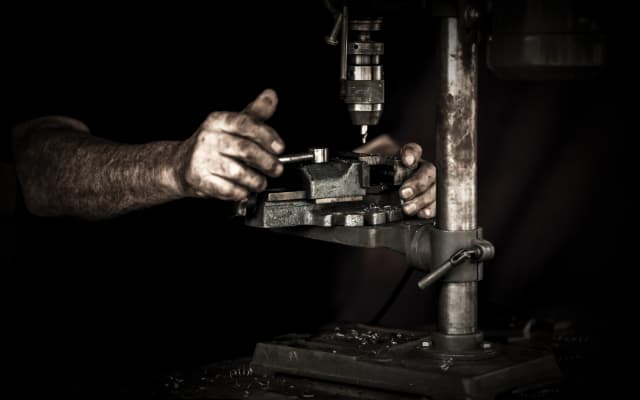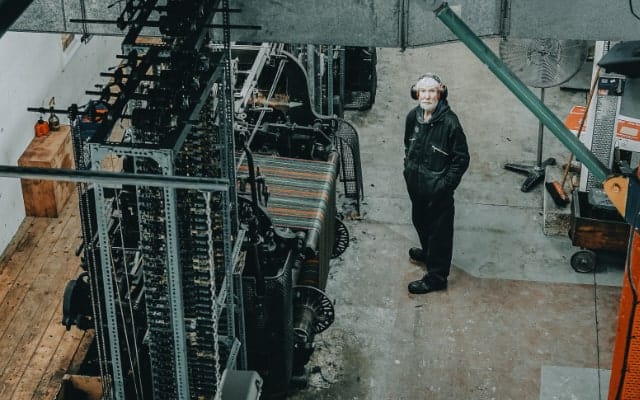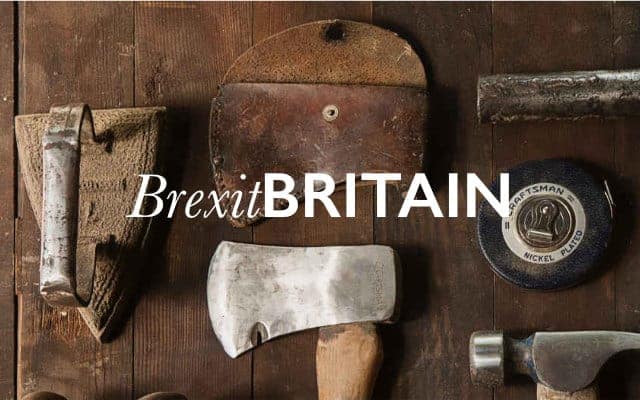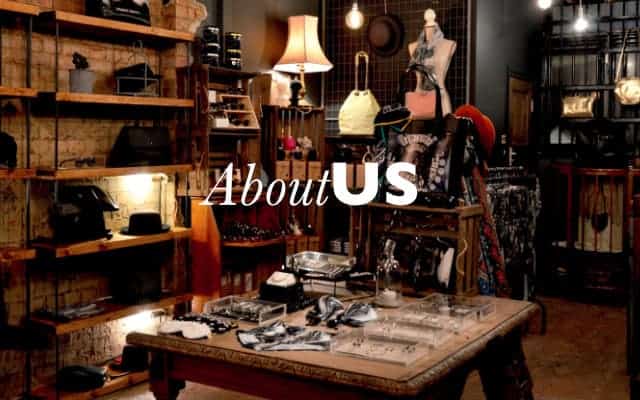HandCRAFTED
Hands and machines in perfect harmony

Exploring Handmade, Handcrafted and Craftsmanship
We all come across the word ‘handmade’ or 'handcrafted' or 'craftsmanship' when we shop online. But have you really thought about how much a hand or even hands were involved in the actual process of making a product. Did someone just give it a round of applause as it left the factory floor? Or press a green go button on a robot to zip around and create the piece? Did someone go out into the wilds of Lincolnshire, handpick the reeds from a river bank, strip them by hand then magically weave them into a basket? Or is it somewhere in between? The use of both machinery and hands to create a product.
With the current crisis exposing the fragile supply chain across the globe and mass manufacturing grinding to a halt. Plus the climate struggling with the pollution of big business, maybe it is time we all started thinking about products that are made better and last longer. These products could be inherently better for the planet. As they will generally be sourced more local thus cutting out the global supply chain which in turn cuts down on CO2 transportation pollution. And as they are made better they could become family heirlooms which means less of the planets resources are used needlessly. Mindful consumerism is the way forward, examining what we buy through the lens of handcrafted. But what can we class as handcrafted?
The definition according to the Oxford English Dictionary is thus. ‘Made by hand, not by machine, and typically therefore of superior quality’. But when you start to think about it this is about as woolly an answer you can get.


Machines or No Machines
There are many objects that you can’t make without some sort of machinery but people would class as handmade or handcrafted. Take a ‘handmade’ chef’s knife made with undoubted craftsmanship. An art that has seen a resurgence in the past couple of years. If they were very traditional they would use foot powered bellows to keep the coals hot for making the metal malleable. Therefore by dictionary definition those bellows are a machine. It has several moving parts that work together to create a particular function. So, does every part of the process need to be handmade? Or is it hand-finished or handcrafted that really makes something special. Or in fact the skill of the craftsman or woman utilising all of the tools at their disposal to create something special
Skilled Craft Skills
Let’s take one of the brands we stock, ACME Whistles. They have been producing whistles since 1870. In fact, they have been instrumental in creating many of the whistles we know now, both in sound and design. The brass they use has obviously been smelted and rolled into sheets and coils by machinery.
This is then taken to Barr Street in Birmingham where they unravel the brass coils, die cut the component parts and relevant shapes. They are then stamped out using hand wound stamping machines. Each component part is then fastened together by hand using wire. They are then placed by hand on a rotating machine that blasts them with sound waves to solder them together. Once they are soldered they are hand polished and buffed until they gleam. The ‘Pea’ is then hand squeezed into the whistle. Then every one is hand placed onto an air-line to make sure it does what it is supposed to do, whistle. This is British craftsmanship with the use of machinery.
Now there is a lot of machinery involved in this process but we would class them as handmade or at least hand-finished. Without the dextrous hands of the skilled ACME workers they would not be half the whistles they are. (which by the way, they are the world’s best whistles)
Definition of Handcrafted
A couple of years ago Etsy changed their user definition from ‘Handmade’ to ‘Handmade in Spirit’. That actually you can use machines and factories to create certain things but skill and craftsmanship still need to go into it. Although this created uproar and fear from its one person operations across the globe. Most thought that big manufacturers were going to steal all of their business away by selling factory made jewellery and art. But that hasn’t happened. It just allowed these small one person bands to expand a little. Etsy even have makers on there now who use CAD programs with 3D-printers to make their products. As they realise it is about skill and ethos and making things in the right spirit.
Let’s take another example, exaggerated a little for dramatic purposes.A simple, beautiful chair that is made by one man. In a hut. In the deepest of deep Forest of Dean. Just him and his trusty Labrador, Dotty.
How does he chop the tree down? Now admittedly he could use and axe, but he is old and not the strapping young man he used to be. So uses a chainsaw. To get the wood to the hut he could drag it there but he has an old pick-up truck, so he throws it in the back of that. When he is at his hut he starts to shape the wood. He could use a traditional plane but he does have a back problem, so he uses an electric plane. He also uses a ban saw to create the lovely, delicate dovetail joints that will keep the chair together. The reason for this is his hands are not as strong and his eyesight is not as good as they used to be.
Once he has all of the component parts he needs, he begins to put them together and construct the chair. It all fits perfectly, he varnishes and lets it dry. He stands back and admires his work. It is a chair to behold. Now, in our eyes that it handmade. All his knowledge and craftsmanship has been utilised and only aided by machines.


British Craftsmanship
The brands we stock in Sir Gordon Bennett are not all handmade in the dictionary definition but they are proper companies. Making proper products. By proper craftsmanship. By proper craftsmen and women. The proper way. The skilled craftsmen and women who make the products do use machinery but that is part of their skill. (like a tennis player with his racquet or a cricketer with his bat)
The leather worker who stitches the gorgeous gloves at Chester Jefferies, uses a machine with skill.
The woodworker who carves the beautiful handles for Kent Brushes, uses a machine with skill.
The buffer who shines the amazing hipflasks at Wentworth Pewter, uses a machine with skill.
The wax puller who makes the lovely candles at St Eval Candles, uses a machine with skill.
We don’t want to get bogged down in terminology or dictionary definitions at Sir Gordon Bennett. Our policy is to only sell goods that have a craftsmanship ethos to them. They are designed to work better, last longer and made here in Great Britain. Sometimes machinery is used, sometimes it isn’t. Some parts of the process couldn’t happen without machinery. Sometimes all it needs it some skilled digits and years of experience.
Handcrafted, handmade, hand-finished, as long as the brand ethos is right we will promote and purvey those British brands. Brands that believe, like us, in doing things right. Which we believe will in the long run be better for the planet. We will never stop 'needing' things in our lives but those things should do the least amount of damage to the planet. By using more sustainable materials and lasting longer, so not ending up in the back of a cupboard or as landfill.
Click the links below to read more post from Gordon'sBUGLE.




